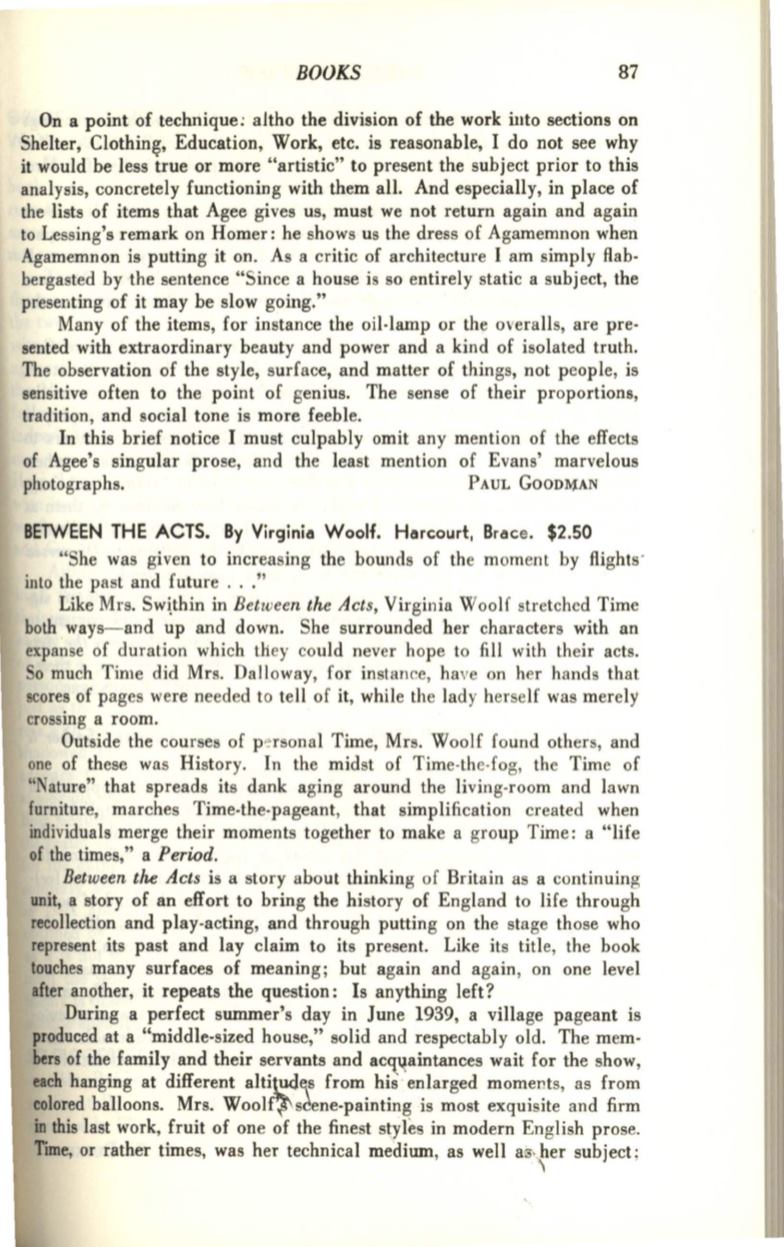
BOOKS
87
On a point of technique; altho the division of the work into sections on
Shelter,
Clothin~,
Education, Work, etc. is reasonable, I do not see why
it would be less true or more "artistic" to present the subject prior to this
analysis, concretely functioning with them all. And especially, in place of
the lists of items that Agee gives us, must we not return again and again
to Lessing's remark on Homer: he shows us the dress of Agamemnon when
Agamemnon is putting it on. As a critic of architecture I am simply flab·
bergasted by the sentence "Since a house is so entirely static a subject, the
presenting of it may be slow going."
Many of the items, for instance the oil-lamp or the overalls, are pre–
sented with extraordinary beauty and power and a kind of isolated truth.
The observation of the style, surface, and matter of things, not people, is
sensitive often to the point of genius. The sense of their proportions,
tradition, and social tone is more feeble.
In this brief notice I must culpably omit any mention of the effects
of Agee's singular prose, and the least mention of Evans' marvelous
photographs.
PAUL GoODI\JAN
BETWEEN THE ACTS. By Virginia Woolf. Harcourt, Brace. $2.50
"She was given to increasing the bounds of the moment by flights ·
into the past and future ...''
Like Mrs.
Sw~thin
in
Between the Acts,
Virginia Woolf stretched Time
both ways-and up and down. She surrounded her characters with an
expanse of duration which they could never hope to fill with their acts.
So much Time did Mrs. Dalloway, for instance, have on her hands that
scores of pages were needed to tell of it, while the lady herself was merely
crossing a room.
Outside the courses of p<Orsonal Time, Mrs. Woolf found others, and
one of these was History. In the midst of Time-the-fog, the Time of
"Nature" that spreads its dank aging around the living-room and lawn
furniture, marches Time-the-pageant, that simplification created when
individuals merge their moments together to make a group Time: a "life
of the times," a
Period.
Between the Acts
is a story about thinking of Britain as a continuing
unit, a story of an effort to bring the history of England to life through
recollection and play-acting, and through putting on the stage those who
represent its past and lay claim to its present. Like its title, the book
touches many surfaces of meaning; but again and again, on one level
after another, it repeats the question: Is anything left?
During a perfect summer's day in June 1939, a village pageant is
produced at a "middle-sized house," solid and respectably old. The mem–
bers of the family and their servants and
acq_~aintances
wait for the show,
each hanging at different
alti~f1S
from his ·enlarged moments, as from
colored balloons. Mrs. Wool£1'sdene-painting is most exquisite and firm
in
this last work, fruit of one of the finest styles in modern English prose.
iiDle, or rather times, was her technical medium, as well
ai»~er
subject ;


